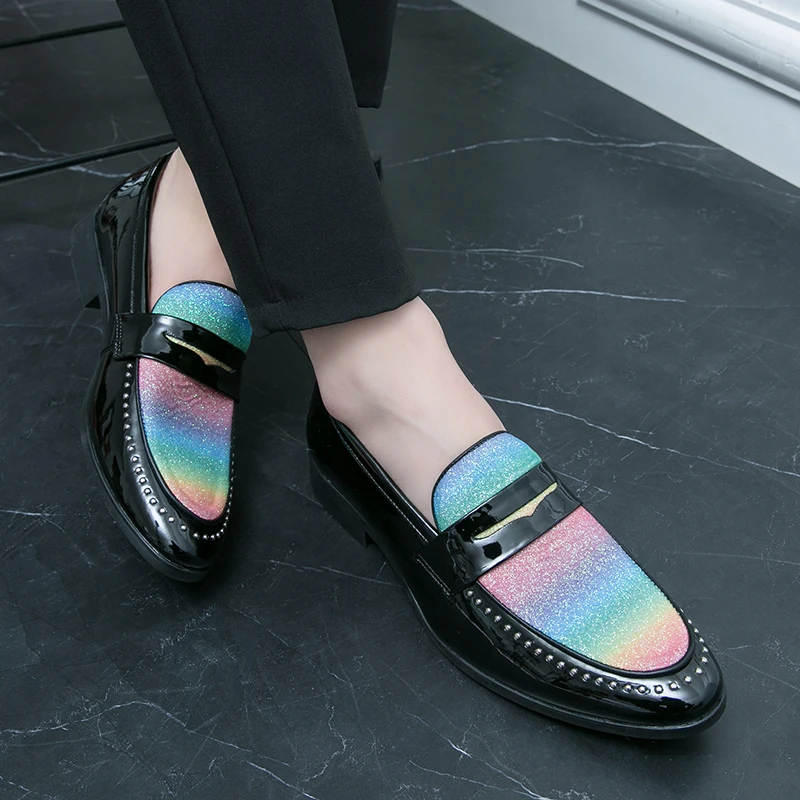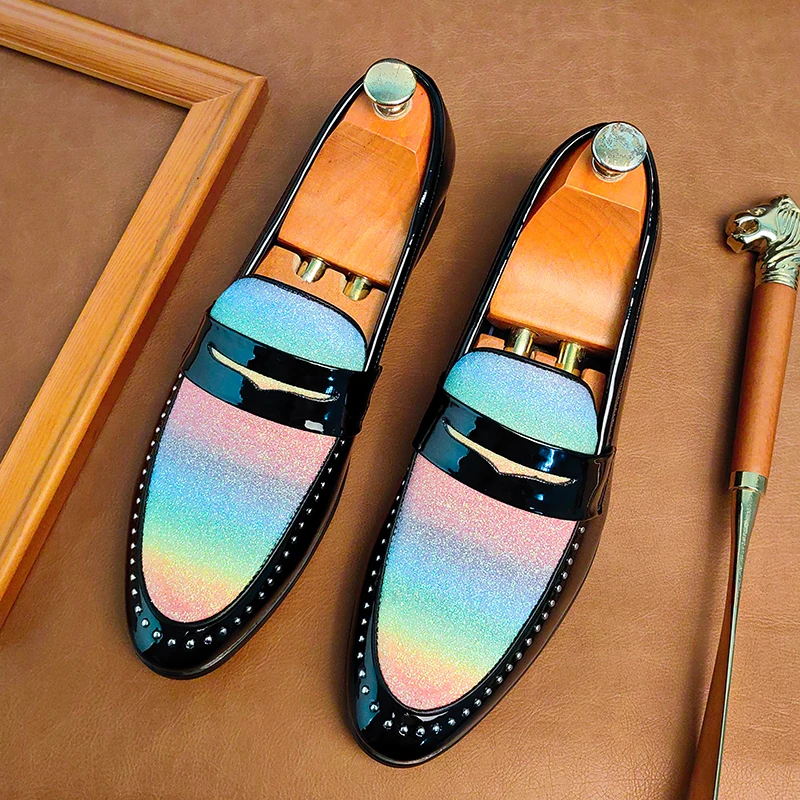Dress shoes often evoke strong opinions. Some people love their classic designs, while others see them as outdated or uncomfortable. This article dives deep into the world of ugly dress shoes. You may ask, “What exactly makes a dress shoe ugly?” The answer is subjective but important. We will explore the various aspects that contribute to this perception of ugliness, from aesthetics to comfort.

What Defines ‘Ugly’ in Dress Shoes?
When we use the term “ugly” to describe dress shoes, we should consider several factors. First, let’s look at aesthetics. Many people think a shoe’s look directly reflects its quality and style. A polished leather shoe with a sleek design can make a strong impression, while an awkwardly shaped shoe can repulse both the wearer and the observer.
Designs That Miss the Mark
Some dress shoes have designs that feel stuck in another era. Large, clunky styles can look outdated. These shoes don’t easily blend with modern outfits. Dress shoes should enhance an overall look, not detract from it. In some cases, the craftsmanship also falls short. Poorly made shoes may have unsightly seams or uneven finishes. These flaws contribute to a shoe’s unappealing appearance.
Color Choices and Materials
Color plays a significant role in making a dress shoe look ugly. Traditional colors like black or brown often work well. However, some brands offer bizarre colors or prints. A bright orange or plaid dress shoe can stand out but in a negative way. Such choices can clash with common dress codes. Materials also matter. Cheap synthetics tend to look and feel less appealing compared to high-quality leather. When shoes lack visual harmony, their ugly factor increases.
Comfort Versus Style
Another critical aspect is comfort. Many “ugly” dress shoes sacrifice comfort for style. A shoe may look fantastic at first glance, but when you wear it, pain can follow. If a shoe fits poorly or uses stiff materials, it can lead to blisters or aching feet. This discomfort contrasts sharply with the elegance that dress shoes are meant to convey.
The Consequences of Discomfort
Uncomfortable shoes may lead to several issues. First, a person wearing painful shoes may walk awkwardly. This affects their posture and confidence. When you are focused on discomfort, you can’t fully engage in social interactions. This situation does a disservice to the purpose of dress shoes, which should enhance both style and confidence.
The Myth of Breaking Them In
Many think that all shoes undergo a “breaking in” process. This belief continues despite its flaws. People often assume that discomfort will lessen over time. However, this scenario is not universally true. Some shoes remain uncomfortable, regardless of how much you wear them. This myth can lead people to hang onto ugly shoes longer than they should.
The Role of Fashion Trends
Fashion trends significantly influence what we find aesthetically pleasing. In one era, shiny black oxfords might be the standard choice. A few years later, loafers or brogues may take the spotlight. Therefore, the perception of ugly dress shoes often depends on what the current trend is. Styles that were once celebrated may eventually become ridiculed.
Timelessness vs. Trends
It’s crucial to recognize timeless designs versus fleeting trends. Some styles remain elegant over the years. For example, a classic brown leather oxford can be versatile. It can work for various occasions, from formal events to casual evenings. On the other hand, certain trendy shoes may fall out of favor quickly, leading to their classification as ugly.
The Influence of Celebrity Culture
Celebrity choices also shape our understanding of what’s fashionable. When a famous figure wears a specific style, many follow suit. This societal phenomenon can turn ugly dress shoes into a sudden trend. Even shoes that seem unattractive can gain popularity if they capture public attention. This mechanic shows how fleeting the idea of “ugliness” can be.
Personal Choices and Self-Expression
When considering ugly dress shoes, personal taste must enter the conversation. We all have different preferences. What one person finds ugly, another may adore. This diversity in taste represents a form of self-expression. Many people wear shoes that reflect their personalities. Some embrace the unconventional looks of ugly dress shoes as a statement.
The Beauty of Individuality
Embracing various styles enriches our fashion landscape. An appreciation for uniqueness can lead to a broad acceptance of different looks. Ugly dress shoes might even resonate more with individuals who pride themselves on standing out. Wearing something controversial can spark conversation and reveal deeper layers of personality.

The Narrative Behind the Shoes
Behind every pair of shoes, there’s often a story. Maybe someone picked them up during a memorable trip. The same shoes might contain nostalgic ties to significant life events. When confronting the idea of ugly dress shoes, it’s essential to look beyond their surface. Understand their context. Assess their impact on the wearer.
Dressing Up versus Dressing Down
One significant factor in assessing the ugliness or beauty of dress shoes is the intended outfit. A pair of shoes may seem ugly when viewed with the wrong clothing. Mixing dress shoes with casual wear can lead to a discordant outfit. However, combining those same shoes with the right attire might unlock their potential.
Finding the Right Balance
To make ugly dress shoes work, one must pay attention to balance. If the shoes lean towards the quirky side, the rest of the outfit should complement them. Think of neutral clothing without overwhelming patterns. This strategy can help create harmony.
Versatility is Key
A versatile shoe can transition through various settings. This flexibility means that even an ugly dress shoe may find its time to shine. Pairing them with formal attire may enhance their appeal. A well-tailored suit can upgrade any shoe, even one that leans into the “ugly” category.
Making the Best Choices
In conclusion, ugly dress shoes reflect a multitude of factors. Sometimes they stem from poor design and discomfort, while other times they represent personal choices or fleeting trends. Understanding your preferences and needs will help you navigate the complex landscape of dress shoes.
Choose Wisely
When selecting dress shoes, think about comfort, style, and personal expression. This approach ensures that shoes fit well and make a positive statement. Remember that while some shoes may have a reputation for being ugly, beauty is ultimately in the eye of the beholder. Embrace your choices, and let them speak for you.
The Last Word
In fashion, there are no absolute rules. Ugly dress shoes might have a place in your closet if styled correctly. Don’t shy away from shoes that might initially seem unattractive. They may surprise you by adding character to your wardrobe. The journey into the world of dress shoes invites exploration and self-discovery. Keep an open mind, and always be willing to redefine what ugly really means.
The Controversy Surrounding Ugly Dress Shoes
The Debate Over Aesthetic Value
The concept of ugly dress shoes is not without controversy. Critics argue that these designs lack aesthetic appeal and fail to adhere to established standards of beauty. They contend that the emphasis on unconventional shapes and materials detracts from the overall elegance and sophistication associated with dress shoes.
Proponents of ugly dress shoes, on the other hand, argue that beauty is subjective and that fashion should embrace diversity. They believe that these designs offer a refreshing departure from monotonous trends and provide an opportunity for creative expression. This debate highlights the ongoing tension between tradition and innovation in the fashion industry.
The Practicality of Unconventional Designs
Another point of contention is the practicality of ugly dress shoes. Some critics question the functionality and comfort of these designs, particularly in formal settings. They argue that the emphasis on aesthetics may come at the expense of practicality and wearability. Supporters, however, argue that fashion is about more than just functionality and that unconventional designs can still be comfortable and functional.
The debate over practicality versus aesthetics underscores the complexities of fashion design. It raises questions about the balance between form and function and challenges designers to create shoes that meet both aesthetic and practical needs.

Conclusion: Embracing the Unconventional
Ugly dress shoes represent a fascinating evolution in fashion. They challenge traditional notions of beauty and offer a platform for self-expression and creativity. While their unconventional designs may spark debate, they also reflect a broader cultural shift towards embracing diversity and individuality.
